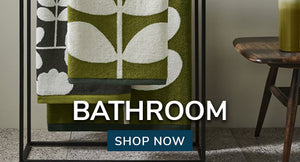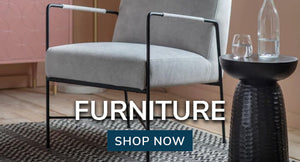Home office design guide
We live and work, today, in a world that is both "Hi-Speed" and "Hi-Tech". The revolution in information technology that we have experienced since the post war era has seen a major shift from an industrialised world to one that is dominated more and more by information technology.
This revolution means that we can now communicate long distance, at speed, from desktop to desktop in a way that is previously unprecedented. Combine this with the economic and environmental benefits such as reduced rent, lower overheads an no commuting - therefore less pollution - and it is easy to see why working from home has become an increasingly attractive option for many people.
Planning Permission & Safety Regulations - Some local district councils do not allow the practice of certain businesses from private dwellings. For example, a business that is likely to create noise would not be allowed on the basis that it may disturb the peace of the neighbourhood. So before you consider converting a particular room in your house or extending your home to create an office space, make sure that you have the appropriate planning permission before you start.
Industrial health and safety rules will also apply once you are registered as working from home, so take the time to find out what they are. You will not only be responsible for yourself but for any other employees you may need to have working from your home.
Space - Your primary consideration when working from home is space. If you do not have a spacious house with a room to spare for the creation of an office, then the chances are that choosing a room to work from will probably mean sacrificing a bedroom or reception room. Consider the room you choose carefully and plan ahead. How much room will you need five years from now. It is better to steadily fill a room with lots of free space than to find out that you have to move to another part of the house to give yourself the space you need. The typical choice of room for an office in a house with limited space, is usually the smallest room. This has many advantages; lower heating and lighting bills for example and the feeling of being enclosed in a cosy, pleasant working space that is conducive to concentration and privacy. On the other hand if the nature of the work that you are doing means that you need plenty of space for storage or to spread out, then the tiny attic or basement are probably not the right choice.
For most of the time work requires three different space requirements. Space for undisturbed work, space for meetings and space for storage. You can go out of your home for meetings but if you do need to use your house for occasional meetings then you may consider your dining room doubling as a board room. When considering your storage options, make sure that they are not only adequate and accessible enough to be convenient, but secure. Important company documents need to be protected from theft and fire. A metal filing cabinet will help protect from fire as will duplicate copies stored at another location. Storing documents away from the home (for example at the bank) is the best safeguard against theft.
Colour - Working from home is likely to mean that you spend more time in your office than in any other part of the house. It is increasingly becoming recognised that as humans, we perform better in an environment which has been created with character and expression, than in one which is as clinical and severe as many typical corporate offices.
Most office equipment that is readily available on the market, offers little in the way of aesthetics or style for your workspace. It is beneficial therefore, to make the most of any opportunities you have to introduce a sense of style to your surroundings. Even in a small room where every bit of space is probably needed for work related materials, you can create a play of colour by using contrasting colours for bookshelves and the wall space behind them for example. Grouping lots of pictures close together on any available wall space or putting an interestingly textured or colourfully patterned rug on the floor will create colour points from which you can build a scheme.
In a larger office you can create bold colour statements with large areas of colour on the walls and floors and use pictures, mirrors and prints to add comfort and detail. As with other rooms bear in mind the basic theory that a room flooded with plenty of natural light will look well painted in a bright or neutral colour, while a darker space will respond well to deeper shades. For an airy atmosphere stay with naturals on the walls and restrict darker colours to the floor. For a warm cosy feel choose dark, rich colours such as deep red, green or terracotta, and compliment with a dark wooden desk or shelves.
Window Treatments - Whatever size your office, you can create a great deal of individuality and character through the type of window treatment you choose. If you do work from home the chances are that you will spend more time in the room that you have designated as an office than in any other room in the house. It is well worth going to the trouble therefore, of making your office a room that you actually and actively enjoy being in. One that encourages you to go in there to work every day and not one that you only associate with formality and business. Curtains will take up more space than blinds, but are far less formal. I you have a period home you may wish to consider a functional blind, (possibly one with a dim-out backing to protect fabrics, books or prints in the room) with a pair of dress curtains to soften the look. For more modern surroundings a wide variety of blinds such as Roman, Venetian, vertical, roller and roll-up are available in a vast range of colours. The benefit to having a blind is that you can use it to create a play of light during the day depending on the level to which you draw it down or close the veins - hence they are both practical and aesthetic.



























































